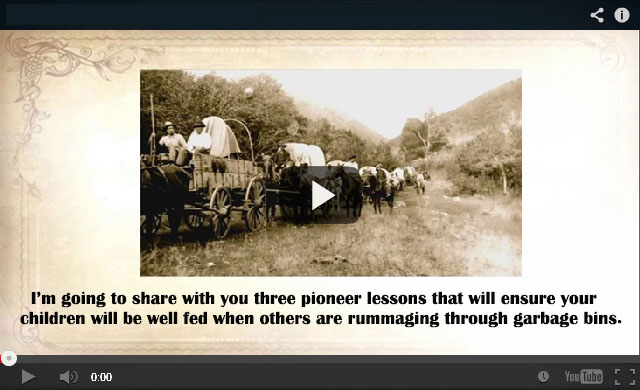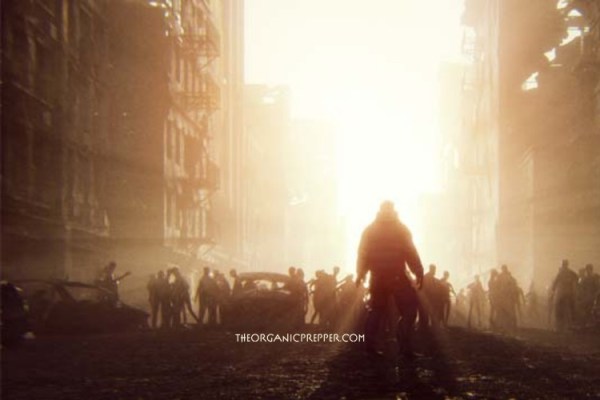The concept of bugging out is one of the most discussed and controversial topics in preparedness and survivalism. The term “bug out” comes from the military. It means retreating, fleeing in a hurry, abandoning position in panic. This definition applies to the act of bugging out in survivalism as well. For the sake of objectiveness, let’s consider bugging out as fleeing the urban context because this is the current situation for most people.
Given the tense situation building around the world, we’re about to see more and more people fleeing from the cities. Many of them have no idea what they’re doing so the definition above fits perfectly. As situations escalate, these relocations will be less planned and they won’t just be moving – they’ll be fleeing.

You can find entire chapters in numerous books, endless videos, articles, and treaties dedicated to the whys and hows of bugging out. The debates continue whether it’s the best or the worst idea ever for when the SHTF.
This dilemma stem perhaps mostly from two conflicting factors:
- The myth of the lone wolf, the romantic and somewhat unrealistic idea of living alone, either fighting in the city or hunting and foraging in the wilderness. It is promoted and believed by many as a viable bug-out option.
- Bugging out involves many variables and decisions which are profoundly important. Bugging-out comes with severe and lasting implications. Detachment from reality and people are nearly impossible to avoid.
Let’s cut through all the nonsense and terrible advice out there. Let’s get real about bugging out.
Why would someone choose to stay rather than bug out?
Abandoning home or bugging out, however we look at it, is an extreme measure, usually dictated by extreme circumstances. In some cases, it can be the only obvious option. In all others, things are not as clear-cut. Examining the reasons why some people tend to remain in place may offer a few insights on the issue.
Motives range from limited options (or none at all), low mobility, fear of the unknown, misjudgment of the situation (something Selco highlights frequently), and lack (or excess) of trust in authorities’ capacity to help. Comfort, conformity, and even entitlement can be reasons for people to stay put as well. Not to mention that a house and its contents can be a significant possession, frequently the most substantial one. No one wants their home looted or vandalized during a disaster.
Indeed in most cases, staying put is probably the best option. Home equals safety to the majority of people, and rightly so. At least during normal times, and therein lies an important distinction, one that can help answer if and when it’s best to stay or to evacuate.
With all that’s going on globally, everyone should have a clear plan
It is necessary to have a clear limit as to when enough brown stuff has hit the fan to justify moving elsewhere, considering the evolution of the situation and our circumstances. This limit is personal and may vary. But having this drawn in advance puts things in perspective while we’re still in good judgment and advantageous position, rather than engulfed in chaos.
Aside from the multiple factors and contexts possible in any evacuation scenario, in essence, there are only two ways to bug out: either with a plan or without one.
Bugging out without a plan is just running from danger
Fleeing without a plan or defined objective is becoming a refugee. That’s what happens when someone decides to rush out without any previous thought or preparation. We grab whatever we can (if we can), get into the car (if possible), and dash, hoping for the best.
Unplanned bug out can work, and a lot of times, it does. But simply evading danger, though crucial for survival, doesn’t necessarily improve the odds of success. Depending on the nature and extension of SHTF, it could mean jumping from the pot directly into the fire.
Bugging out with a plan is moving towards safety
Having a plan (or two), knowledge, and information gathered in advance, means we, at the very least, pondered a few crucial factors. In doing so, it is possible to weigh options, make informed decisions, think more clearly, and act without panic, also adapting as necessary.
Planning implies asking – and answering – questions like “where,” “how,” “when,” and “then what.” To answer those satisfactorily, we’re forced to consider various aspects involved with the execution of something, possible developments, and scenarios.
That’s what turns a haphazard getaway into a strategic escape.
IMPORTANT:Having a plan doesn’t mean considering every possibility, laying out every detail, and setting each step in stone. Being adaptable is vital in survival. In other words, don’t over plan. And be ready to abandon your plan at any moment for a better outcome.

The more we know ahead of time, the better we can plan and the faster we can adapt
Information and knowledge are essential for mobility and flexibility in a bug out or bunker in scenario (and it’s sensible to plan for both). Following are some tips for gathering useful intel before a disaster or SHTF:
- Situational awareness: This pertains to the original meaning of the term (knowing what’s going on around us). But right now, it’s essential to expand a bit and keep close tabs on the economy and finance, politics, criminality, transportation, production and supply chains, geopolitics.
- Spatial awareness: Get to know more and stay informed about the people, places, routines, entrances and exits, resources, and routes, both on smaller (house, building, block) and bigger scales (neighborhood, city, other states, and so on).
- Background: Research history of places and areas you often circulate to the occurrence and developments of natural and human-made events. Map out potential hazards and “complicators” (hospitals, stadiums, police stations, military and diplomatic facilities, prisons, bridges, etc.).
- Routes: To increase bug out safety, the same intel as outlined above, is needed on paths and places to be used en route. Otherwise, we’re just heading into the unknown as soon as we leave home. Add topography and other details you might consider pertinent.
- Self-awareness: An honest assessment of our abilities and limitations (physical condition/fitness, skills, etc.) is important for a more precise judgment on whether potential obstacles in a bug out scenario represent a challenge or not, and to what degree. Extend to family members, pets, and others included in the plans.
- Readiness: This is where a bug out bag comes into play. Think “survival and agile” instead of “comfort and clunky.” A backpack containing a quality knife and flashlight, an emergency blanket, some clothes, a tarp or poncho with cordage, medicines and basic first-aid kit, some cash, copies of documents plus a list of contacts, a few energy bars, a water bottle and filter, a lighter. (Here’s a look at Daisy’s lightweight kit and here are Toby’s recommendations for often-overlooked items for your bags.) Each member should have a ready-to-go bag.
Three points in the bug out equation define the line of action
Context: For someone living alone and without limitations, bugging out can be as simple (although not necessarily easy) as dashing off and getting there. Having others – kids, elders, relatives, pets, conditions, etc.- adds complexity and challenges, and most certainly requires a specific set of plans. It may mean bugging out can be risky, take longer or be more difficult, or even impossible.
Location: Depending on the severity, reach, and SHTF duration, a B.O.L. can take different forms. It can be a hotel in another state, away from the path of a hurricane. Or a relative/friend house in a region out of fire/flood range. It can be a new home in another country to escape a dictatorship, civil war, or invasion. Technically, any place safer than our current location qualifies as B.O.L.
Timing: A highly discussed topic, opinions on timing vary wildly. Most preppers and survivalists have valid points. I’ll present my view, and it’s a simple one: you are your best judge. If you conclude that the situation is, or will become, bad enough and already decided to leave, then go. There’s no way to know how long the opportunity to leave will remain. Only we know about our situation enough to make that call. And in the end, whatever we do will be on us.
Bugging out does not mean you have to leave the city
One consensus in prepping and survivalism is that cities quickly become very dangerous during disasters and SHTFs in general. Resources become scarce, and services decay or disappear fast when the grid goes down. Too many people equal more competition and lots of violence. Density is a bitch: an immutable principle of SHTF.
Now, of course, having a piece of land or community in a friendly and safe region can be a good thing. But it’s not a requirement for bug out. In reality, very few preppers (and non-preppers for that matter) can afford a dedicated place that is ideally distant, safe, well maintained, stockpiled, and always ready.
But, what good is a B.O.L. if we get there and it’s not functional? What if it has been invaded, looted, or vandalized? Things like that can happen even during normal times. If SHTF, the odds of a secluded B.O.L. being out of order may increase considerably. An effective B.O.L. is not just a matter of money either. Having a presence, a connection, and knowing the place (also being known) is, in fact, more determinant for having a functional B.O.L.
Prepping for an in town bug out location
After the crash of 2008, I felt it was about to hit the fan and that I could end up living on the streets one day. Around that time, I started preparing for that possibility. I’m a city dweller, so it’s obvious that whatever happens – an economic meltdown, a coup, an E.M.P. – I’ll have to deal with the streets sooner rather than later.
If I ever bug out, reaching our B.O.L. (a family branch living in a rural setting) implies crossing a lot of urban ground to get out of town. If that is not an option or possibility, I can’t imagine any scenario in which I’m comfortable hiding inside for weeks or months, despite stockpiled supplies. Even if staying indoors is somewhat safe, which will depend entirely on the situation, at some point, I’ll have to go out.
I’ve been “training” for SHTF by spending time walking around town, scavenging, interacting with people, eating, and sleeping in parks and streets. I was basically living homeless for a few days now and then. I wanted to know this reality and feel it. Then I started testing gear and reviewing my area, map routes, and resources. The scope included more tactical exercises to improve my situational awareness, refine grey man strategies, acquire street smart, and stay fit.
Finally, this in-town B.O.L. had to be something simple, practical, and affordable. Basically, this would be a place to store gear and supplies and for my family and me to stay. If we can’t leave the city and our home becomes too dangerous, having this option is beneficial. Not all SHTF situations demand fleeing town. This little B.O.L. could also serve as a springboard to my definitive B.O.L.
The cache: splitting resources is a sensible strategy
A small room in an inconspicuous commercial or office building can double as a cache and city B.O.L. A storage room can do as well, but office buildings are usually located in safer areas. Perhaps more important, they sit lower on the list of targets to desperate people looking for food and other stuff during emergencies. Finally, people are going in and out all the time, so it’s more discreet if you need to stay in for a period.
During the protests and riots of 2013 against the government, we fled to our small city B.O.L. on two occasions. I live in an area where popular gatherings and demonstrations are frequent during turbulent times. It’s an OK neighborhood, but my street is right next to where mobs converge. Some days it was possible to hear the shouts, gas bombs, and helicopters from our room. Stores and banks got vandalized in our area.
Some neighbors fled town for a week or two. I figured it wasn’t bad enough to justify leaving the city (it wasn’t, not full-SHTF-bad anyway). But we felt unsafe at home, and I had no idea if things would get worse. Staying in our small city B.O.L. proved an opportunity to test this strategy. When the protests ended, we returned home, and I knew it was viable in an emergency. We did the same again during the worse days of the 2018 trucker’s strike.
Research everything and find your best options
Do your own B.O.L. research and test it: Depending on where you live, if you decide to try, be sure to carefully study the distances and locations. As for costs, you may split the rent and other items with relatives or friends, preferably ones also into prepping. Find a location that attends to all parts, put it together, and discuss the strategies and plans. Don’t forget OPSEC when building and supplying your cache, so strangers don’t know that your place has SHTF resources.
Another viable option is a B.O.V. (Bug-out Vehicle): Bug-out vans (or R.V.s) offer versatility, mobility, and flexibility without spending a fortune on a dedicated B.O.L. (R.V. sales exploded in the U.S. in 2020, indicating that many are opting for this as a strategy.) It can also function as an out-of-town B.O.L. for those who don’t have one but still plan to flee in case of SHTF. Having a discreet vehicle ready, stocked with food, gear, and other emergency items can be a lot less expensive than maintaining a B.O.L. in or out of town.
Depending on the vehicle’s size, a family can live inside for some time until the situation improves, and it’s possible to return home or leave definitely. It can be used as an “extra room” if you reach a friend or relative out of town. Find a safe, inconspicuous place to park. Be discreet operating it. OPSEC is essential here too. Being nearby also means it’s easier to maintain and keep functional.
NOTE: If you live near the sea, a lake, or a river, a boat can be an even better option in some scenarios.

Conclusion
At the core, bugging out with a plan is less dependent on chance and relies more on variables that we control, increasing our odds of survival.
As for the possible exodus, it may be that nothing significant happens (other than what has already happened, of course). Anyone who left may return and start rebuilding whatever got lost or destroyed during this crisis. But it may be the other way. We may find that those who opted for the early bug-out were justified in doing so.
Have you considered bugging out? Or, maybe you already have. What are your plans, thoughts, ideas? Let us know in the comments below.
source : Fabian Ommar



